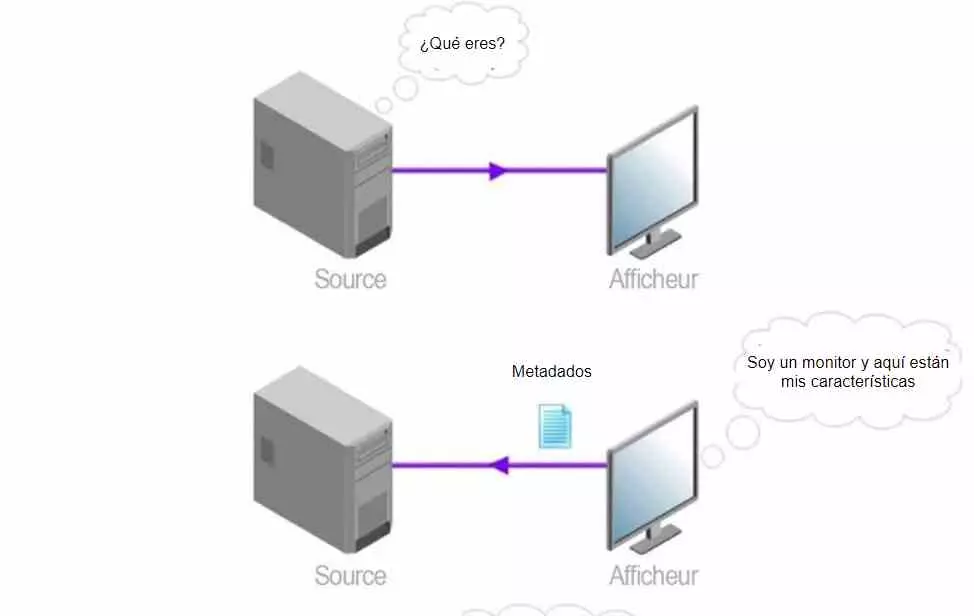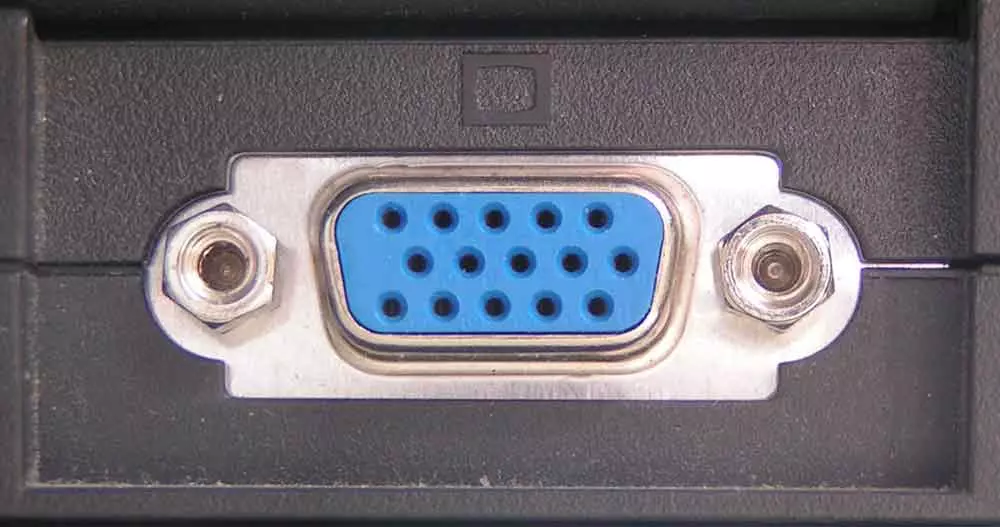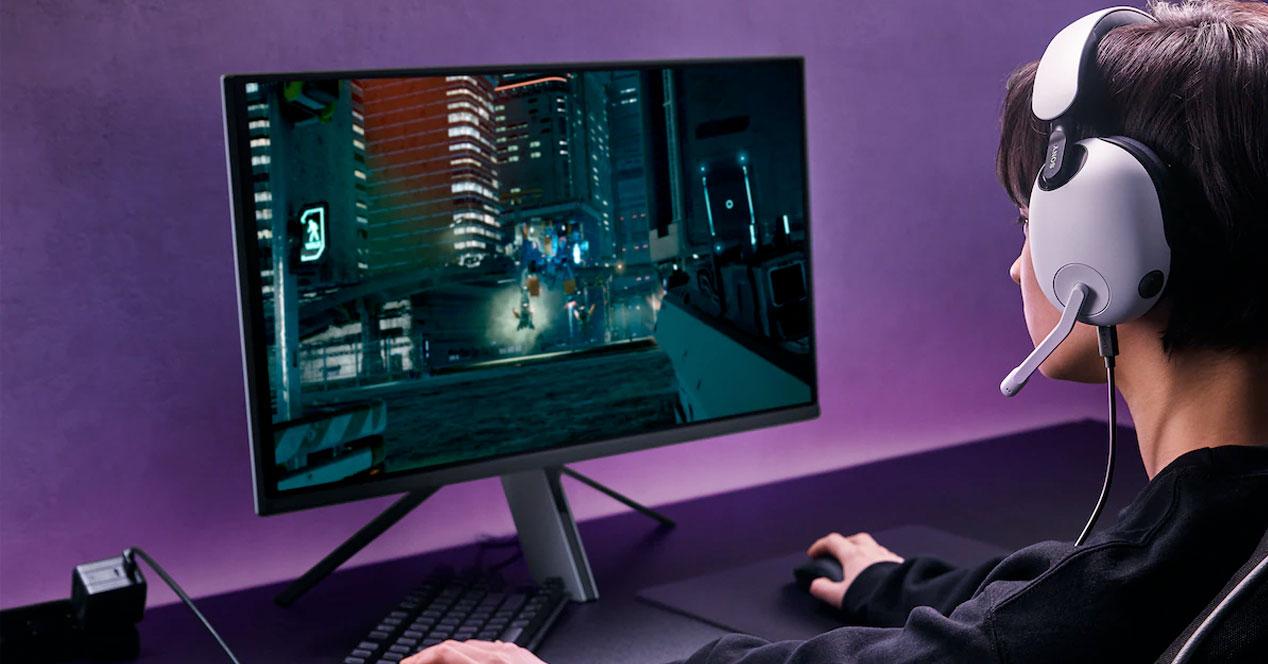
Have we ever found that a game does not work smoothly at a screen resolution and we have been forced to use a lower one or we have simply seen how the one we use to work is not good enough and we have changed it for another one that is more comfortable for our eyes.
Whatever the situation, many times you will have noticed that a resolution change does not occur automatically and that there is a certain delay in its occurrence. That is, we do not see the change from one frame to another, but we see a fade to black and then see how our monitor shows the new resolution. Therefore, at the time that this change occurs, the entire video system stops completely to restart under the new parameters.
But, how are these parameters transmitted between the graphics card and the monitor? How does our PC know which screen we have connected to it and how it works? The answer to it is simple, the video cable apart
The origins of the DisplayID
The origins of DisplayID can be found in its direct predecessor, called EDID or Extended Data Display Identification. A standard that was defined by VESA, the body in charge of giving standards related to screens. It must be taken into account that in the case of computer monitors, and since the era of VGA monitors, we have had a large number of computer screens of all sizes or resolutions.
The first version of EDID was released in 1994, within the initial version of the DCC standard and was based on a modification in how pins 4, 11, 12 and 15 were used. Where before the implementation of EDID those connectors of the popular analog video connector were used to define different resolutions. With the arrival of the Display Data Channel, pins 9, 12 and 15 were defined as the communication method to send a collection of metadata up to 128 bytes, which includes monitor information such as the following:
- The ID associated with the manufacturer.
- The serial number of the monitor.
- Its manufacturing date.
- The product ID
- The type of video output
- screen resolution
- Supported color space
The EDID standard also evolved along with video connectors and with the arrival of LCD monitors and digital video connectors it was integrated into the already forgotten DVI port, the popular HDMI and also the first versions of DisplayPort in the form of the pin defined as SDA.
The arrival of DisplayID
In December 2007, VESA decided to wipe the slate clean to create what was originally going to be the second generation EDID, which expanded the metadata table from 128 bytes to 256 bytes and was baptized as DisplayID, but broke the backwards compatibility with its predecessor.
The difference between DisplayID and EDID is that the information blocks containing the metadata are defined in blocks, they can have a variable size of up to 256 bytes. In this way, if it is necessary to integrate a new screen technology into the standard, it is as simple as extending the content over the corresponding block, each defined by a unique label.
This has made it possible to add support for new screen types, new refresh rates, a greater number of resolutions and new screen technologies without being limited to the only 128 bytes of information to define the characteristics of the screen that the EDID had.
Where is it used?
If you have a device that currently has a screen, whatever type it is, then be clear that the DisplayID metadata sent over the video connection is going to be used. Let’s not forget that every screen has a microcontroller inside, which is in charge of receiving the video signal and controlling how it will be displayed on the screen.
Therefore, it is not only found in the PC world, but also in mobile phones, video game consoles and in any device that uses a screen to communicate visual information with the user, regardless of the relationship they have with each other. The DisplayID is, therefore, a necessary standard so that the use of the screens is automatic and does not require configuration, that is, connect and go.
In other words, if this standard did not exist, something as simple and necessary as connecting an external screen would become a real hell that would cost us a lot to solve by not being able to see the images on the new monitor, which would require the use of another to be able to configure it.
Why does the hardware need to identify itself?
We must start from the fact that all the components that are connected through the PCI Express bays have a PCI-ID, while if we talk about connections through USB then it is where the USB-ID makes an appearance. The identification codes in the different peripherals of a computer serve to detect plug and play or plug and play. As soon as new hardware is detected the operating system asks for the ID and looks for its driver among the system files or internet driver repository corresponding to the ID that particular piece of hardware has.
Displays, on the other hand, use video connectors such as DisplayPort, HDMI, DVI, VGA and many other industry standards, however, it is important that the graphics hardware of our PC has the ability to communicate with any type of display that we can. Let’s connect and function with it correctly. So the metadata connection, which is DisplayID, is also crucial when we have special cases where the communication between both ends is not completely smooth or image artifacts occur.






